The clash between the two German giants kept faith to all of its promises and was a match full of attacking prowess and goals. Within the offensive spectacle, both teams showed interesting tactical strategies to beat the opposition. In the following, we will analyse the tactical battle between Kovac and Favre. Furthermore, we are going to analyse how Dortmund made the turnaround after a disappointing first half from a tactical perspective.
Line-Ups and Formations
The line-up of Borussia Dortmund with several changes surprised many. The injured Bürki was replaced by Hitz. Zagadou and Akanji were lined up in the central defence as Diallo was still missed due to injury. Whereas Piszczek and Hakimi remained on the full-back positions, Favre undertook some further changes in midfield and attack. In midfield Weigl played as a pivot next to Witsel. Instead of Pulisic and Alcacer, Götze and Bruun Larsen were taken into the starting line-up.
Götze should link up midfield and attack with short passes and prepare for penetrating passes to the fast wingers Larsen and Sancho. Weigl was supposed to help the defence in build-up to accelerate play and thereby outplay the opposition press.
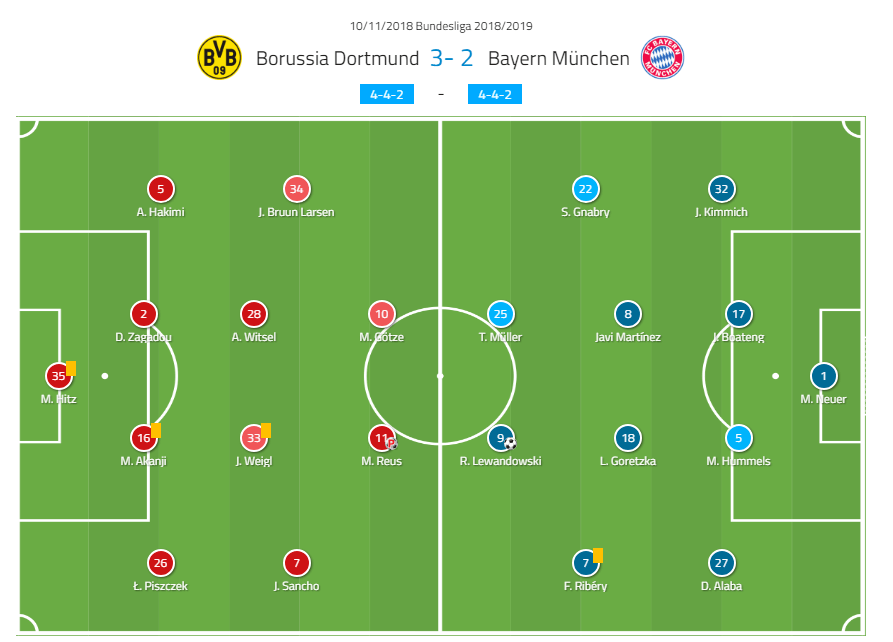
Niko Kovac followed the principle “never change a winning team” and lined up exactly the same players as in their recent win over Athen in the Champions League.
Typically for Bayern under Kovac, FCB played in an asymmetrical 4-3-3 in possession as Müller played as an offensive midfielder with a big range of movement and Goretzka positioned himself as an advanced midfielder higher than Martinez. In defence, Martinez and Goretzka defended as a double pivot behind central offensive midfielder Müller and striker Lewandowski forming a 4-2-3-1 shape. Occasionally, this shape changed into a 4-4-2 like displayed above and explained later in this analysis.
Dortmund’s struggles in build-up
The first minutes of the match reflected the further happenings of the first half. Dortmund attempted to build from the back but struggled to progress up the pitch. Often Bayern’s press forced them to play long balls. However, neither Götze due to his missing pace nor Marco Reus as he mostly dropped back into midfield, were able to pose problems for Munich’s defence in these occasions.
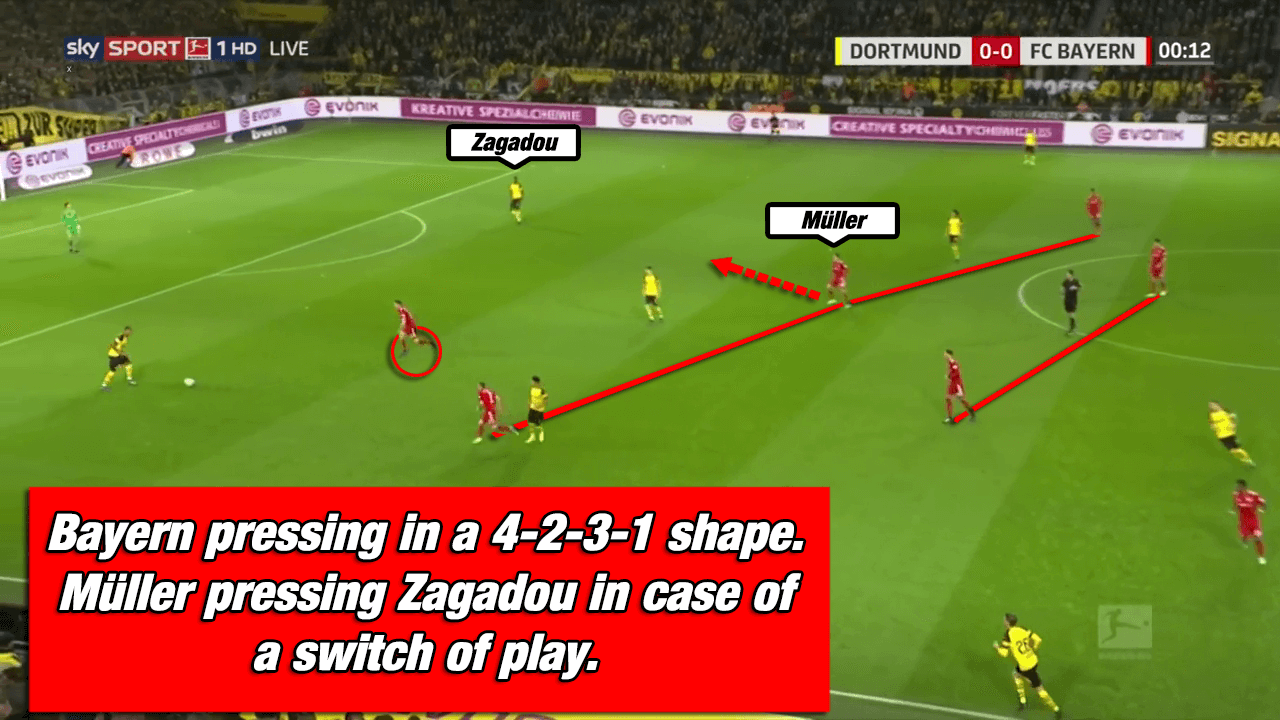
Since Bayern continued with their high press Dortmund rarely got out of their own half. FCB pressed in their typical 4-2-3-1. Müller first stayed in offensive midfield to mark Weigl and supported Lewandowski by pressing Zagadou after a switch of play. Goretzka supported Martinez in central midfield to mark Witsel and close down the passing lane to Reus. The wingers stayed with their opposition full-backs most of the time to prevent Hakimi or Piszczek to contribute to Borussia’s attacks.
Bayern’s counter-pressing
Bayern Munich showed an improved structure in their possession phase compared to earlier stages of the season. Contrary to their former U-shape, Bayern occupied space between the lines.
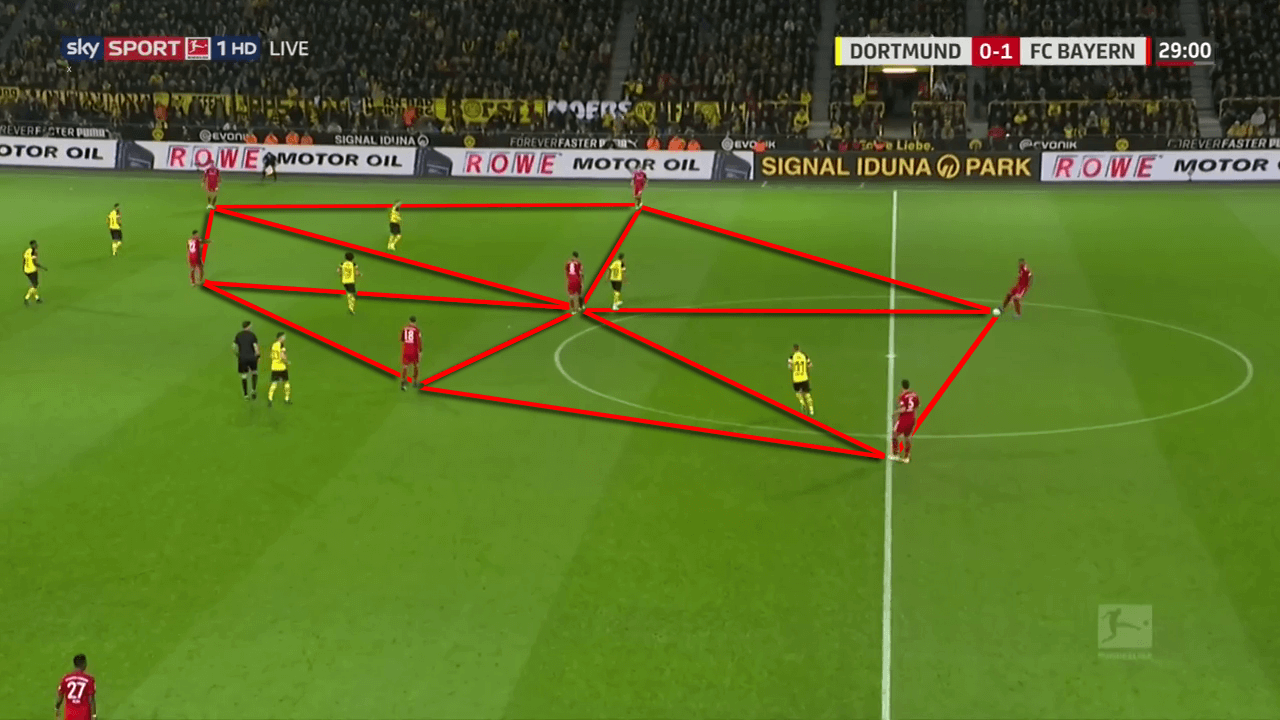
This led to better connection between central defence and midfield and therefore lead to a good counter-pressing structure.
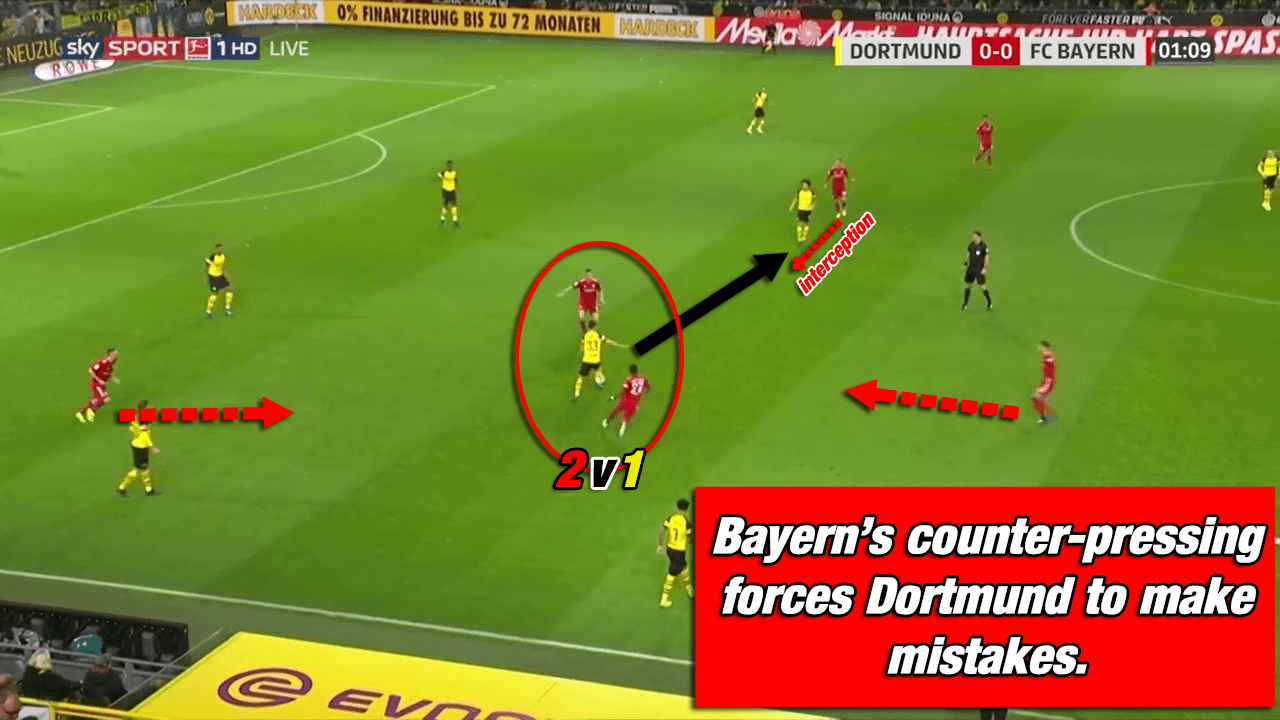
Paired with poor decision-making of Dortmund players (Weigl in the situation above), this enabled Bayern to quickly regain possession and thereby dominate the first half.
However, Dortmund already had some opportunities for counter-attacks like in the situation below. The attackers missed precision in the final pass, though.
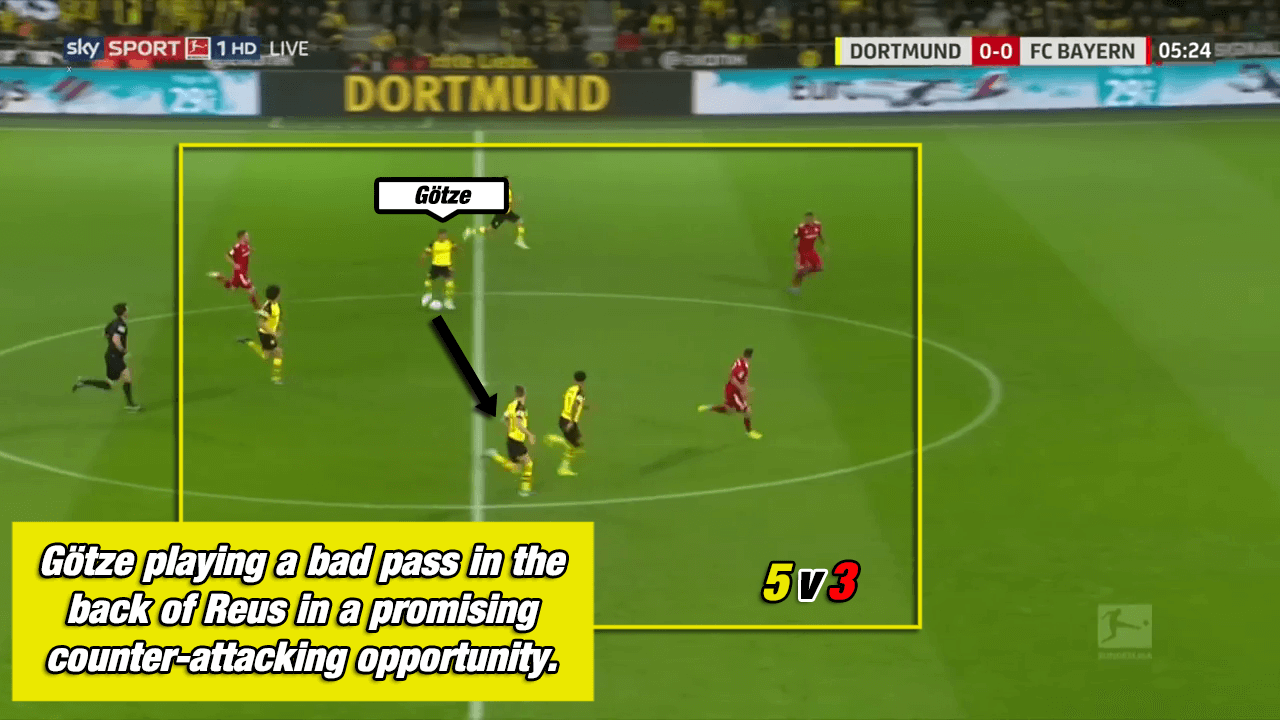
Whenever Niko Kovac’s side was able to regain the ball, the reigning champion was able to threaten Borussia’s defence on the wings as Sancho and Bruun Larsen often moved high up the pitch in transition phases and could not support their full-backs. Especially on the right side, Piszczek got into some dangerous 1v1 situations against Ribery.
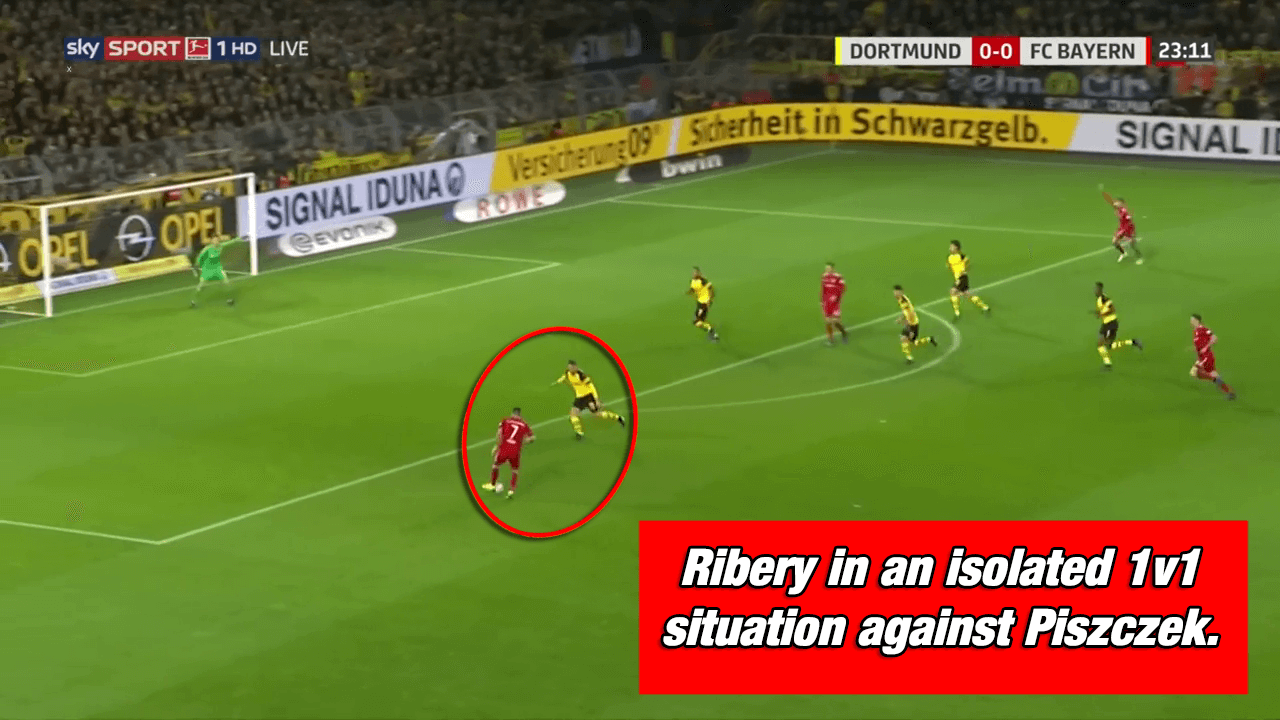
The defensive approach of Dortmund seemed rather passive. Out of possession Dortmund formed a low block in a 4-4-2 with Reus and Götze up front and Weigl and Witsel in central midfield. However, BVB did not succeed to stop Bayern’s build-up and therefore got into dangerous situations on the wings after being overplayed.
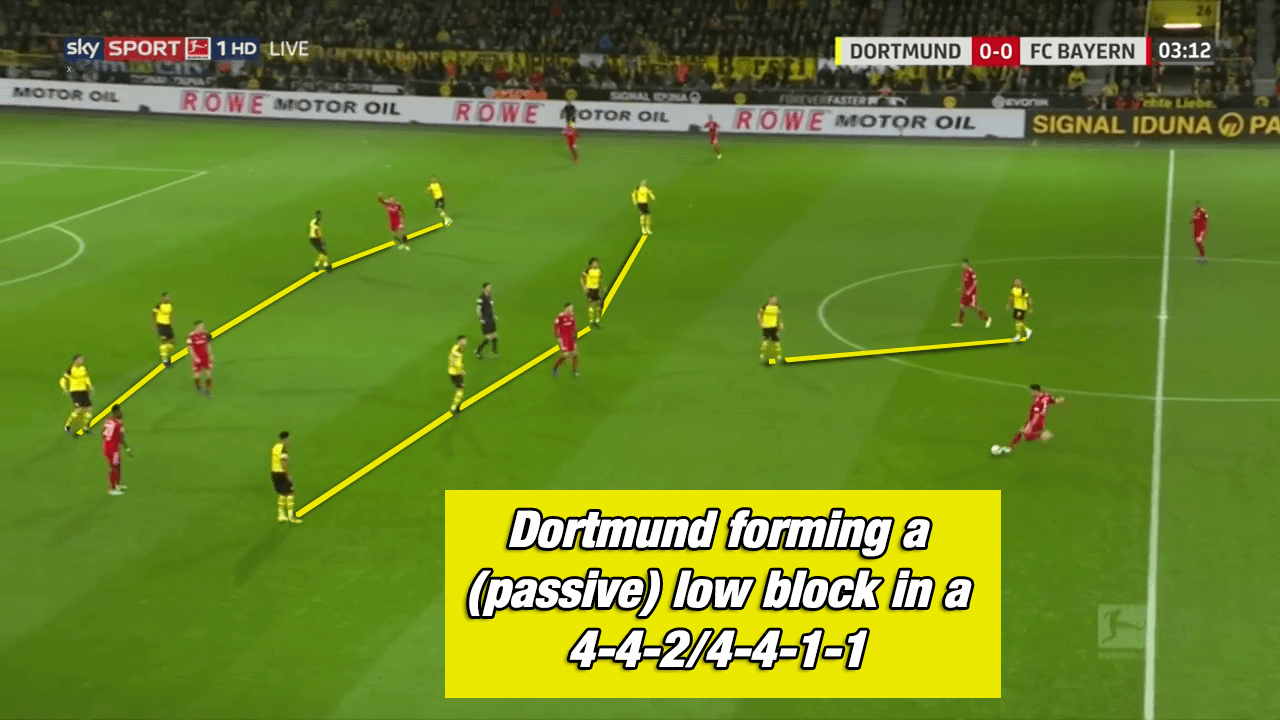
Dortmund’s substitutions to success
In the second half of the match, Dortmund took control of the match with the help of Favre’s substitutions.
In central midfield, Dahoud played instead of Weigl in the second half. As an anchor in front of the central defenders, Dahoud managed to structure the build-up play of Dortmund which lead to a higher success rate of playing out. Moreover, Dortmund showed some different solutions to outplay the press. Occasionally Piszczek moved higher up the pitch taking Ribery with him. That way Witsel was able to receive the ball in the full-back position.
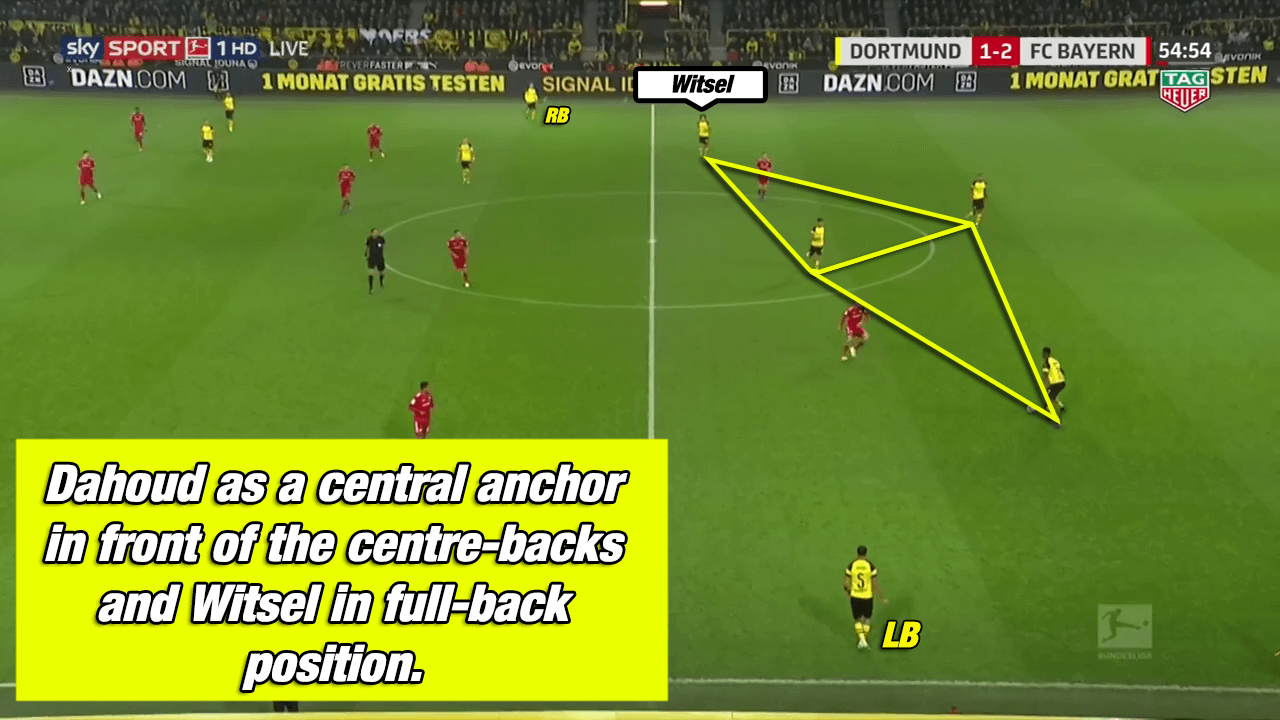
As a further approach, Hakimi rotated into central midfield to create space for winger Bruun Larsen. Then, Hakimi was able to run into depth receiving the ball after a diagonal pass into the half space.
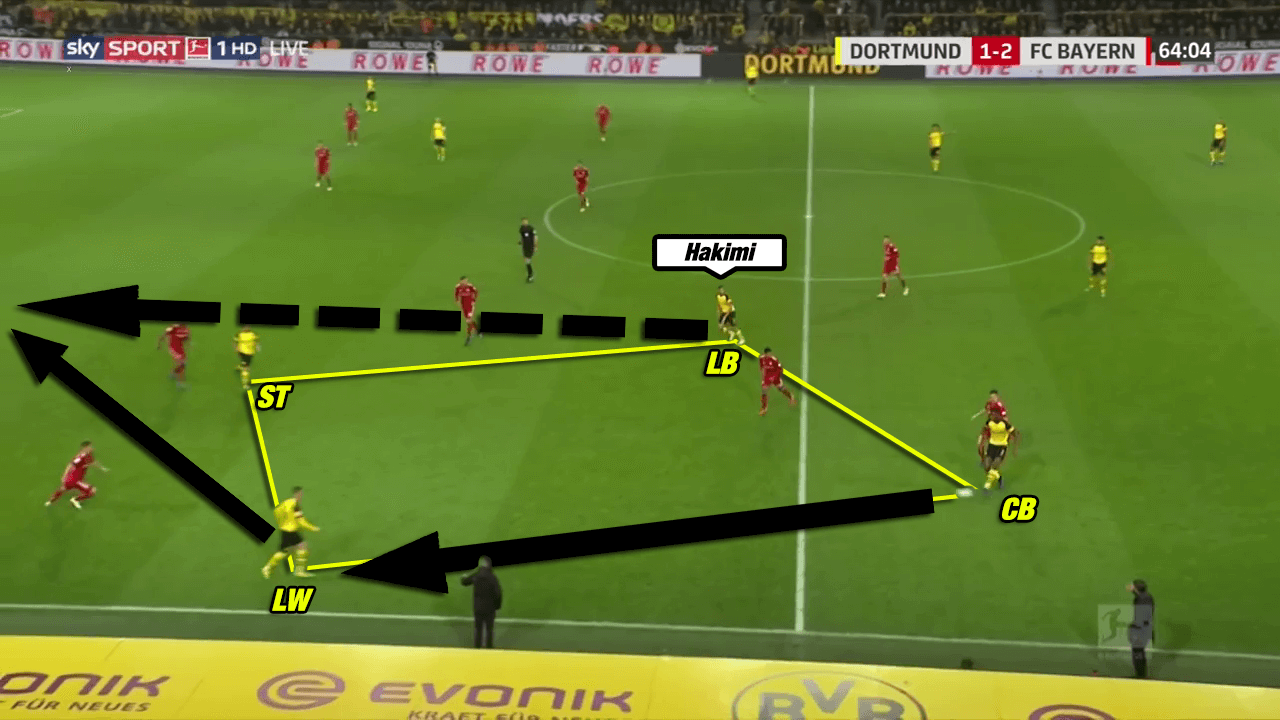
As Bayern missed central cover during their attacks in the second half, Dortmund got plenty of counter-attacking opportunities.
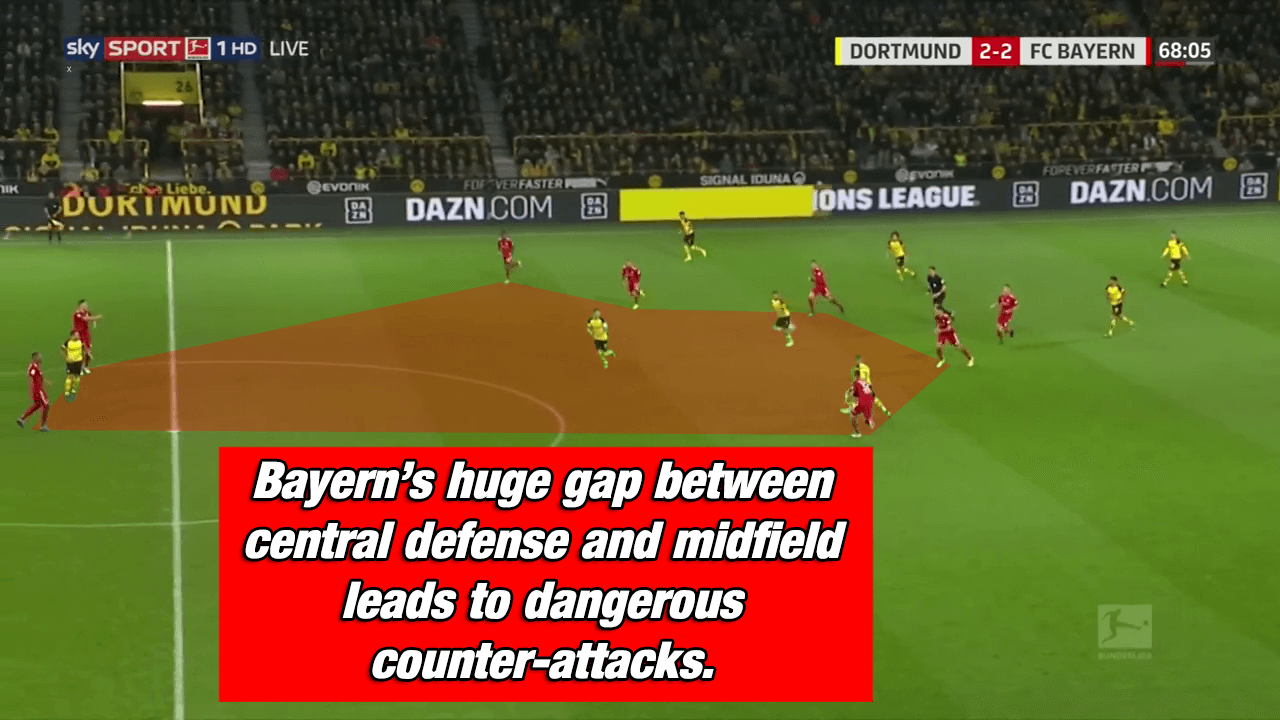
Bringing Alcacer for Götze into the attack brought a different type of player for Dortmund’s play. This immediately paid off for BVB as they were able to penetrate Bayern’s defence in counter-attacks using the pace of the Spain international.
Whereas Götze had to wait for his teammates to follow due to his missing pace in the first half, Borussia could make use of the pace of Alcacer in the second half. Winning the ball in their own half, Dortmund’s midfield always searched for a through pass to their striker. This strategy perfectly worked out in the 73rd minute when Alcacer could mark the winning goal of the match.
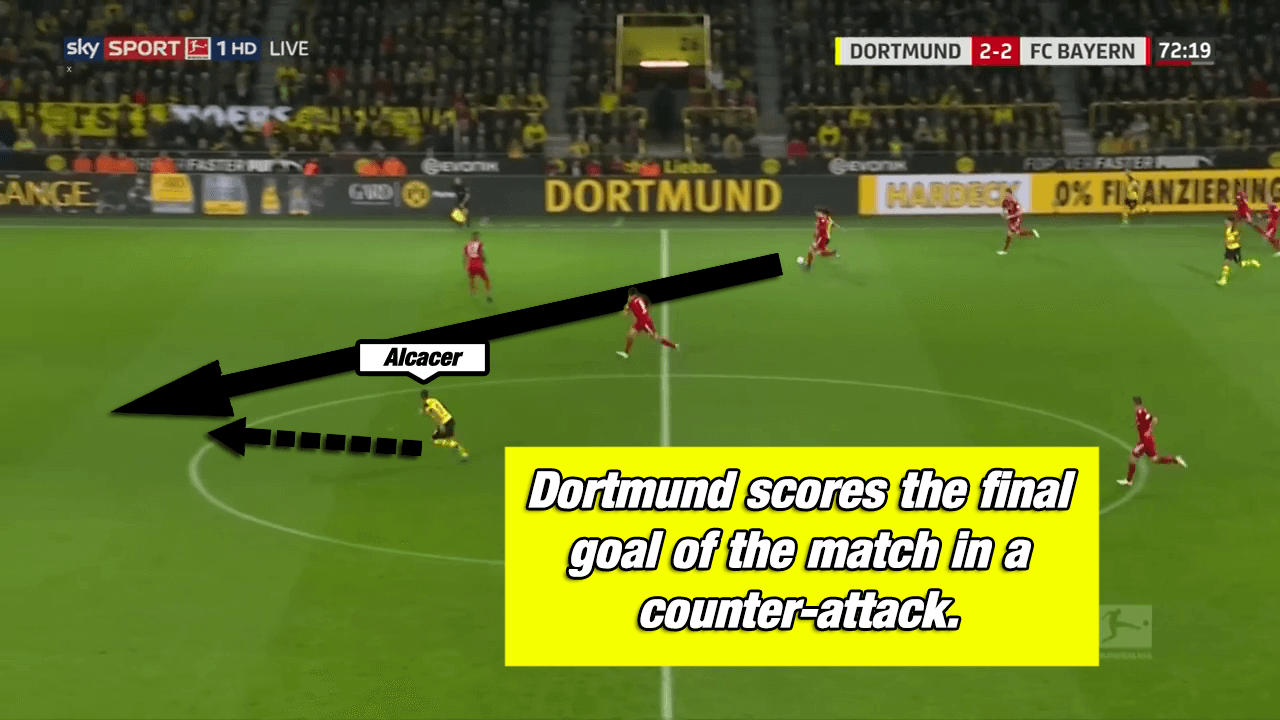
Conclusion
Bayern could not retain their counter-pressing structure in the second half. Therefore, Dortmund was able to break the Bayern defence in fast counter-attacks after the clever substitutions of Dahoud and Alcacer.
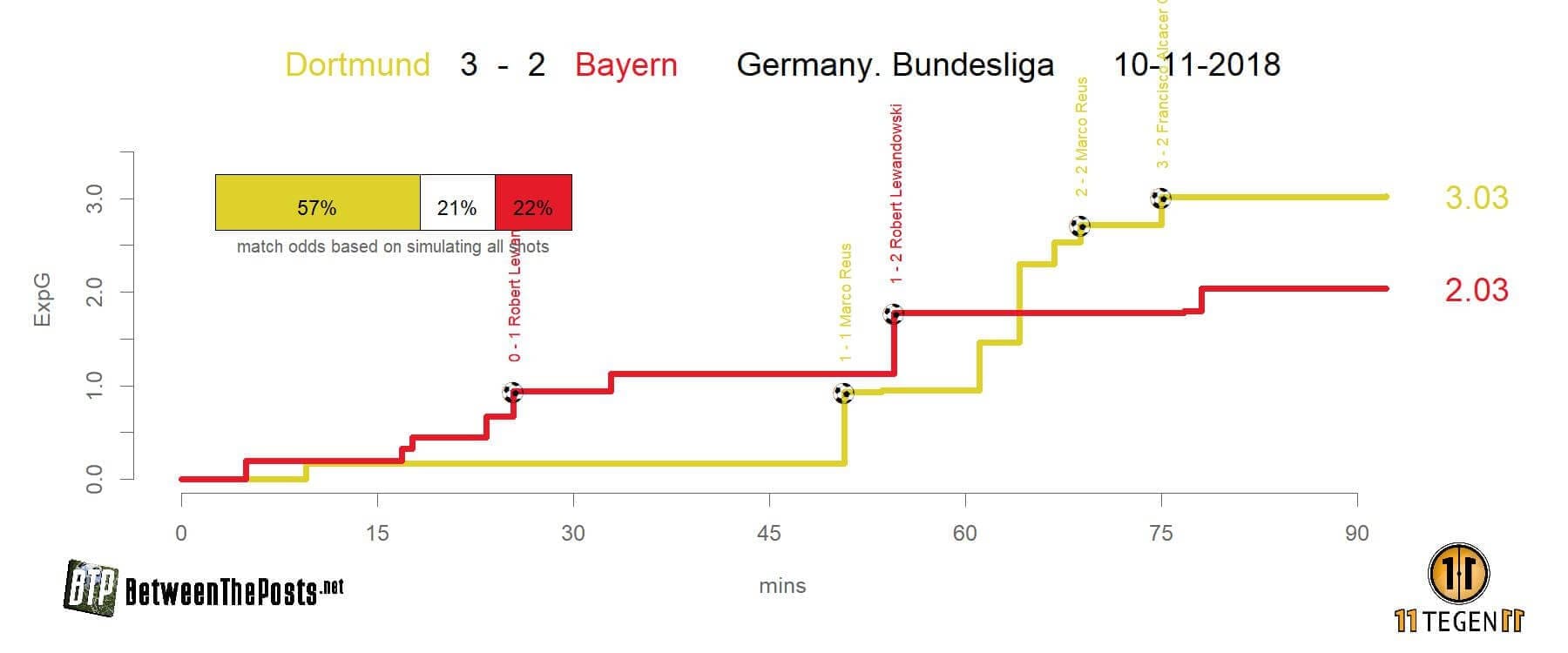
The x-Goals chart from 11tegen11 above shows the superiority of BVB especially during the last third of the match. Due to the development of the home side throughout the match, it was a deserved win for Dortmund.




Comments